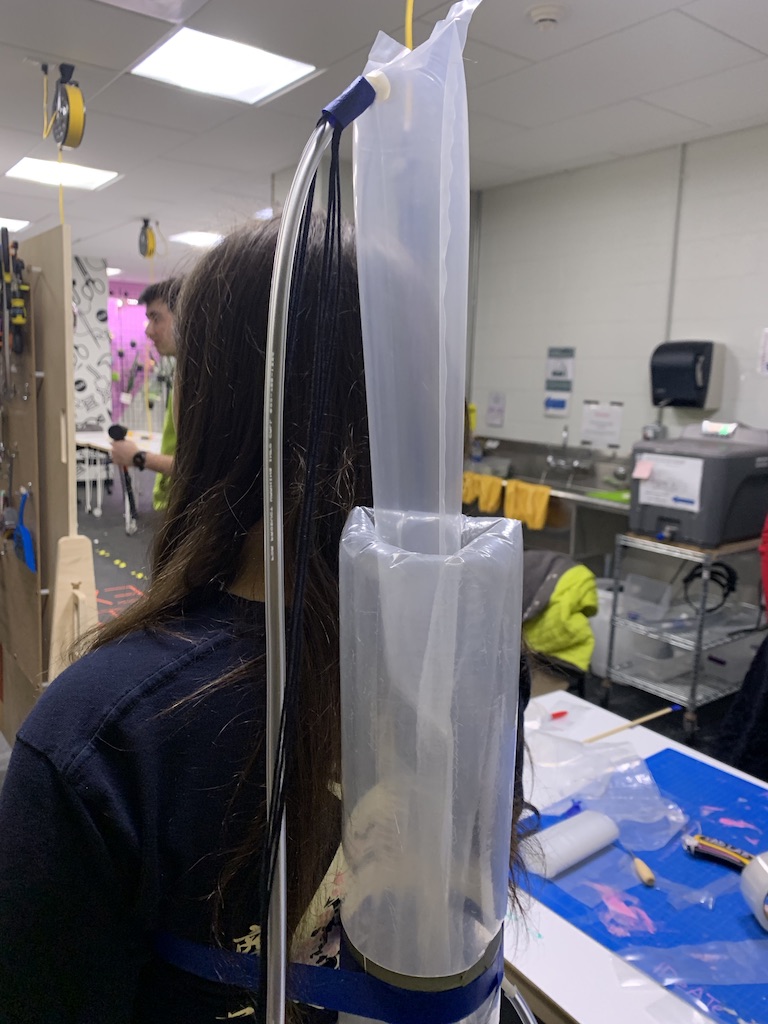As the first piston extends upwards, the wearer is choked by a noose-like lasso wrapped around their neck. The parasite is inhaling, drawing breath from the diminishing life-force of the choking host. As the parasite exhales, the second piston extends downwards, releasing the noose and allowing the host to keep their life.

To control the airflow we tried to use the midi drum pads, but found that we were able to get more precise control required to balance the air between the three chambers from the manual valves (which unfortunately limited our filming options). If we were able to truly program the MIDI controller (as opposed to controlling it by varying the force used to push the buttons, we would be able to drive it automatically.
We also ran into issues with the strength of the plastic. To extend upwards we needed to increase the pressure to overcome gravity, but this wore out the bags after a few cycles and minute holes began to appear in the outer bag. We tried taping over these holes, which worked to stop the airflow, but also made the toroidal bag too stiff to rotate around itself. We also tried reinforcing the outer bag with more plastic, but this added too much friction to the system. However we were able to run it for a few cycles before the plastic wore out. It is also possible that these holes are created from the plastic hose fittings rubbing on the plastic, so developing a low profile method of attaching the hoses would also help this project.
We both worked closely together on all parts of this project. When we came up against a technical challenge, we both proposed solutions and tested all of them to see what worked.
Leave a Reply
You must be logged in to post a comment.